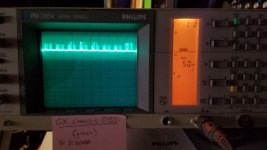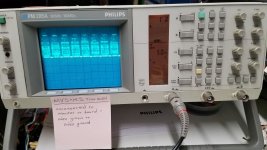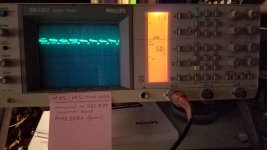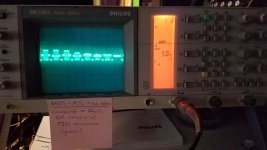So I recently acquired one of my arcade grails: a Neo Geo 4-slot. Got it on the cheap because it was using a Zenith TV + RGB>composite converter board instead of a proper monitor. After becoming immediately dissatisfied with the blur and artifacts this introduced, and having no money to buy a 25" arcade monitor, I reasoned the TV HAD to use an RGB signal at SOME point. And though I didn't even know what a "chassis" was, I had a mission. That led me to the discovery that people had figured out the OSD hack about a decade ago. Bonus.
Without further backstory, I got it working.
Essentially. Partly. Everything's too dark.
I set my camera to full-manual mode and took some pictures. The two "RGB" images aren't zoomed, I just had my camera on a different tripod, closer to the screen. Either way, the difference in brightness between the two sets of pictures accurately represents the problem.
My gut says the solution goes beyond simple tweaks to resistor or capacitor values, and will involve additional circuitry/components, but I'm out of my depth.

I don't want to flood this first post with information, so I'll supply it as needed.
Without further backstory, I got it working.
Essentially. Partly. Everything's too dark.
I set my camera to full-manual mode and took some pictures. The two "RGB" images aren't zoomed, I just had my camera on a different tripod, closer to the screen. Either way, the difference in brightness between the two sets of pictures accurately represents the problem.
My gut says the solution goes beyond simple tweaks to resistor or capacitor values, and will involve additional circuitry/components, but I'm out of my depth.

I don't want to flood this first post with information, so I'll supply it as needed.











